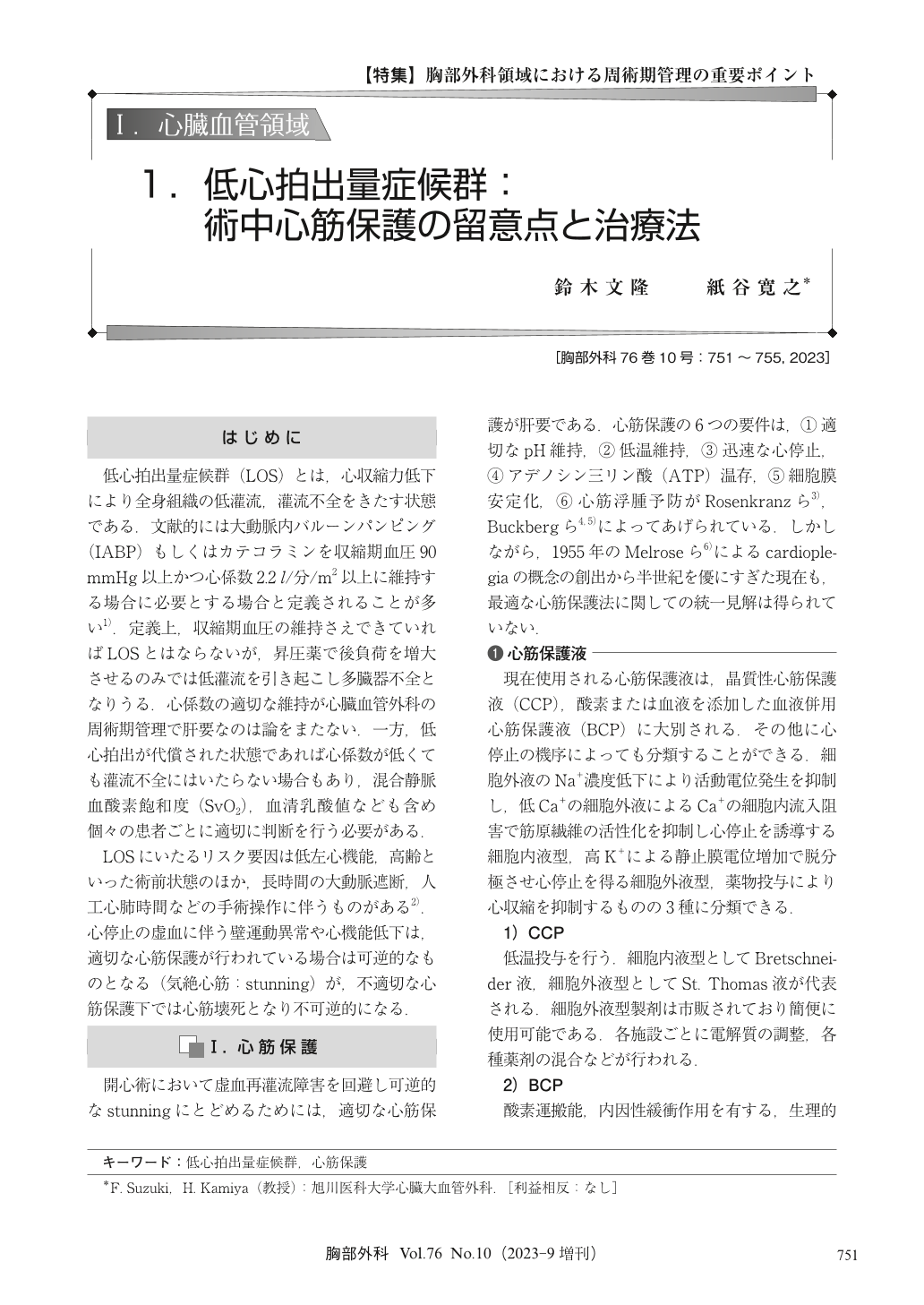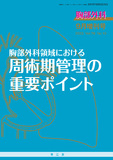Japanese
English
- 有料閲覧
- Abstract 文献概要
- 1ページ目 Look Inside
- 参考文献 Reference
低心拍出量症候群(LOS)とは,心収縮力低下により全身組織の低灌流,灌流不全をきたす状態である.文献的には大動脈内バルーンパンピング(IABP)もしくはカテコラミンを収縮期血圧90 mmHg以上かつ心係数2.2 l/分/m2以上に維持する場合に必要とする場合と定義されることが多い1).定義上,収縮期血圧の維持さえできていればLOSとはならないが,昇圧薬で後負荷を増大させるのみでは低灌流を引き起こし多臓器不全となりうる.心係数の適切な維持が心臓血管外科の周術期管理で肝要なのは論をまたない.一方,低心拍出が代償された状態であれば心係数が低くても灌流不全にはいたらない場合もあり,混合静脈血酸素飽和度(SvO2),血清乳酸値なども含め個々の患者ごとに適切に判断を行う必要がある.
Low cardiac output syndrome (LOS) is a condition that causes low perfusion and perfusion failure of the entire body’s tissues due to a decline in heart contractile strength, posing a significant challenge in cardiothoracic surgical perioperative management. Appropriate myocardial protection is crucial to prevent ischemia-reperfusion injury during open-heart surgery and prevent LOS. The integrated myocardial protection method, proposed by Buckberg et al., is one technique employed for this purpose. In the treatment of LOS, interventions are made in the parameters of stroke volume and heart rate, structural abnormalities are excluded and dealt with, and mechanical assistance is utilized when necessary. With the aging and increasing severity of surgical patients, the risk of postoperative LOS is on the rise. Therefore, the application of appropriate myocardial protection and treatment methods leads to improved prognosis. It’s worth noting that ensuring optimal myocardial protection during surgery and the correct application of medication and devices for intervention can significantly improve patient outcomes. With the rise in high-risk surgical cases due to aging and an increase in severe conditions, the importance of these interventions cannot be overstated.

© Nankodo Co., Ltd., 2023


